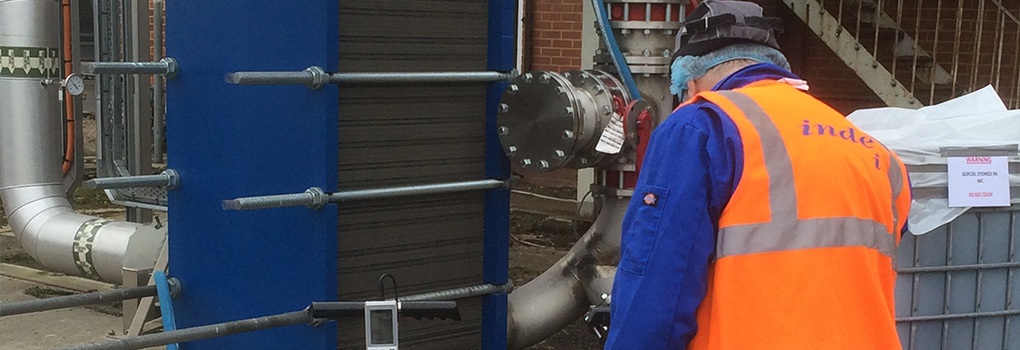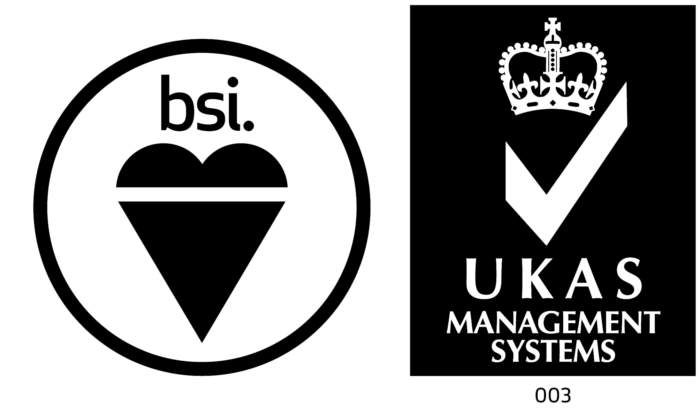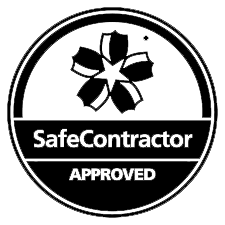The leading supplier of Heat Exchanger inspection and crack testing methods and solutions.
Within the food, dairy, brewing, drink and pharmaceutical industries there is an ever-present risk of product contamination that, if undetected, could result in product recalls, damage to brand names and, in the worst case, serious illness or death to a consumer.
Independent Integrity Inspection Limited (INDEi) is the leading supplier of Non-Destructive Testing (NDT) and Inspection methods to the many food, dairy and beverage prominent companies in the world. Our services are proven to provide a crucial edge in preventative maintenance programs; by the definitive testing of pasteurisers and heat exchangers used in a broad range of industries. Our rapid, accurate testing methods allow several heat exchangers to be tested in a single day which reduces production downtime and eliminates potential cross-contamination issues being created within the production process lines.
Saline Conductivity differential method.
INDEi has developed a testing method utilising the pressurised saline conductivity differential system which ensures the detection of any through-thickness cracks and in addition proves the integrity of plate and tubular gaskets in heat exchangers and pasteurisers.
Using clean potable water on one side and inert sodium sulphate as the corresponding medium and combined with differential pressures, the ability to detect cross-contamination is possible and highly effective.
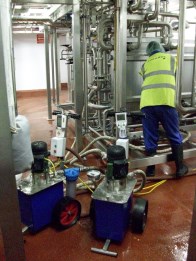
Pasteuriser inspection using the saline conductivity method
The saline conductivity method is dynamic, simulation of real-time running conditions within a heat exchanger.
The method identifies the occurrence of cross-contamination without the PHE being dismantled and can be used on a wide variety of PHE’s, in differing environments.
The integrity testing of plate, tubular, scraped surface pasteurisers and heat exchangers to detect for cross-contamination has become a critical element of a preventative maintenance programme for leading food, dairy and beverage producers.
Regular heat exchanger testing and pasteuriser inspection help ensure early detection of a crucial problem before it becomes apparent as a health risk. This system thus allows for the early identification of damages and micro-biological problems, prevention and thus preclusion of follow-up costs caused by unexpected production stops, repairs, product recalls etc.
Helium Gas testing method.
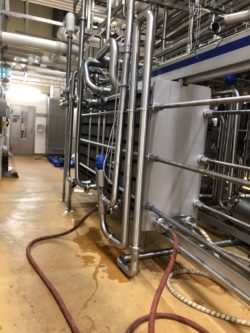
Plate heat exchanger inspection using helium gas testing method
This non-destructive, non-corrosive and non-toxic method of detecting plate defects thus enabling preventative measures to take place by detecting faults early, avoiding unforeseen downtime.
Helium is the best choice of tracer gas to find leaks for a number of reasons. It is non-toxic, inert, non-condensable, non-flammable and not normally present in the atmosphere at more than trace amounts (5 ppm). Due to its small atomic size, helium passes easily through leaks. The only molecule smaller than Helium is Hydrogen which is not inert. It is also relatively inexpensive and is available in various size cylinders.
A helium leak detector, also known as a Mass Spectrometer Leak Detector (MSLD), is used to locate any through-thickness cracks in heat exchangers and pasteurisers. The tracer gas, helium, is introduced to one side of the heat exchanger and the other side is connected to the leak detector. The helium leaking through the crack enters through the system and displayed on a meter.
Using this preventative heat exchanger inspection method, one can prevent damages such as the dreaded microbiological contamination caused by product cross-contamination at an early stage.
Why use INDEi for your inspection and integrity testing needs?
The performance and safety of your products are of the utmost importance to us. As a renowned specialist, we utilise both methods of integrity testing to ensure an efficient, cost-effective and provide a very quick solution to your inspection requirements.
We provide both services to give you the option to choose your preferred method of integrity testing that’s most suitable to your heat exchangers and production.
Not sure which method would be better for you? Get in touch with our knowledgeable technical team today to discuss your individual needs and requirements.
And being completely independent, INDEi operates to the highest standard of service and impartiality when carrying out on-site integrity testing.
- The integrity test is carried out in-situ and does not require the heat exchanger/pasteuriser to be disassembled;
- Our testing method is not hindered by any residual water or other liquids remaining in the heat exchanger. Any glycol left in the pack can be used to carry out the test (no wastage).
- Minimal disruption/downtime to production;
- A typical heat exchanger/pasteuriser can be tested within 30 minutes up to 1 hour;
- 5µm particle system filtration allows accurate defect detection (saline conductivity method);
-
Both circuits are tested to ensure nothing is missed;
- Far superior to the water only / hydrostatic testing methods which are only suitable for the detection of gross defects and certainly not suitable for fine cracks or other through-thickness imperfections in large plate heat exchangers;
- Duo safety packs can be tested;
- Gasket condition and integrity are assessed as part of the overall test;
- The testing solution is non-toxic, non-corrosive and quickly removed by cleaning in place “CIP” afterwards;
- Exact defective plate(s) or tube location can be provided.
Application and measuring ranges :
- Plate heat exchanger;
- Tube heat exchanger;
- Duo safety packs;
- Scraped Surface Heat Exchanger (SSHE);
- HTST and UHT – plants;
- Pipeline inspection;
- Container examination;
- Filling plants.
In addition to the pressurised saline conductivity and helium gas methods, the exact location of the defective plate(s) or tubular section within the heat exchanger or pasteuriser can be achieved by a supplementary testing method utilising our ultrasonic acoustic equipment, enabling our qualified technician to identify the individual problematic component within the suspect heat exchanger.

